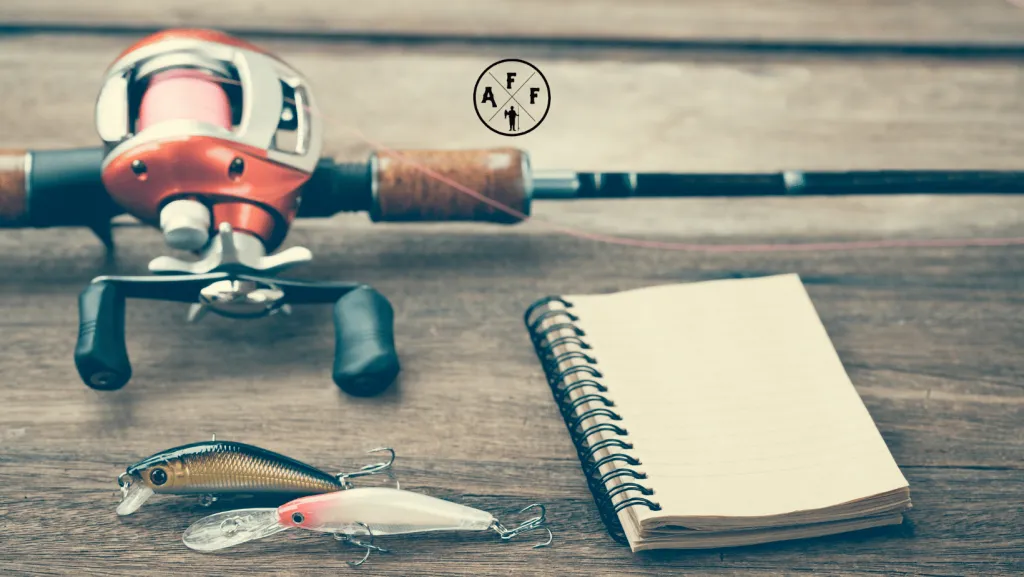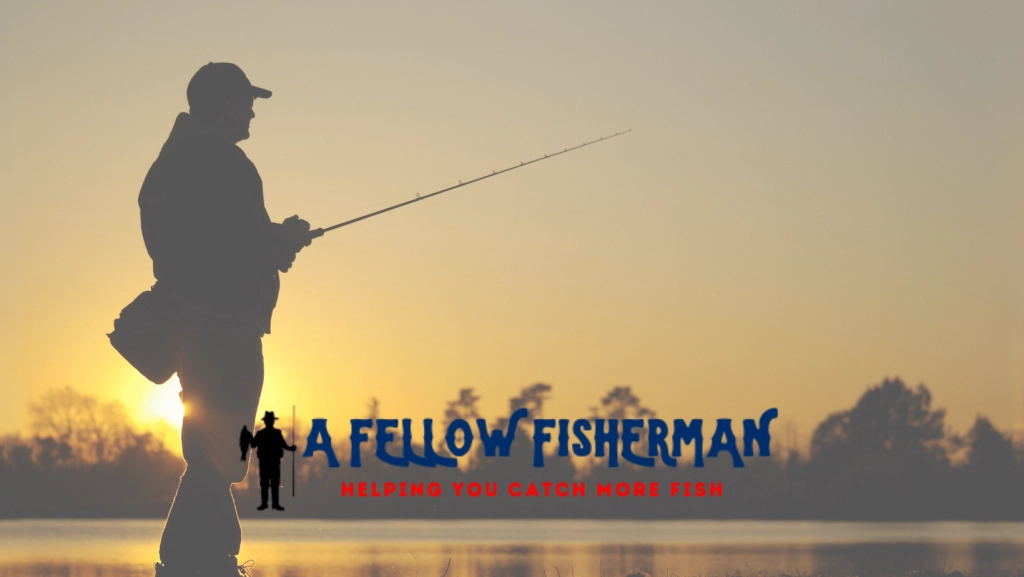
Do you want to learn about baitcasting reels?
Understanding the different parts of a baitcasting reel is crucial before casting one. A baitcasting reel has more components than its counterpart, the spinning reel. Understanding the parts and how baitcasting reels operate will increase your chance of catching more fish with a baitcaster.
There are many benefits to using a baitcasting reel, such as its accuracy and power. Keep reading to learn more about each component of the baitcasting reel to help you catch more fish.
Different Parts of a Baitcasting Reel
- Star Drag
- Reel Foot
- Brakes
- Cast Control Knobs
- Spool Tension Knob
- Spool
- Thumb Bar
- Line Guide
Parts of a Baitcaster Explained
Star Drag
The star drag is the knob on the back of the baitcasting reel. This part is used to set the resistance on the spool. The higher the resistance, the slower the line will come off the spool.
Reel Foot
The reel foot is a platform that helps support the baitcaster reel when mounted on a rod. This part is usually made of metal or plastic and is attached to the bottom of the reel.
Brakes
The brakes are located on the side of the baitcasting reel and are used to control the speed of the spool. There are two types of brake systems: centrifugal and magnetic. Centrifugal brakes use friction to slow down the spool, while a magnetic brake system uses magnets to slow down the spool.
Cast Control Knobs
The cast control knobs are located on the side of the baitcasting reel and are used to adjust the amount of fishing line that is released during a cast.
Spool Tension Knob
The spool tension knob is located on the side of the baitcaster and is used to adjust the tension on the spool. This part is critical because it prevents the fishing line from being released too quickly and tangled.
Spool
The spool is the part of the baitcasting reel or any reel that holds the line. It is usually made of aluminum or plastic and is located in the center of the reel.
Thumb Bar
The thumb bar is located on the back of the baitcaster reel and is used as a manual way to free your spool during casting or reeling.
Line Guide
The line guide is located over the top of the spool and moves side-to-side with the line inside of it. The line guide ensures that your line is distributed evenly across the spool during casting and retrieving.
Things to Consider With Baitcasting Reels

Low-profile vs. round baitcaster
Regarding the debate of round vs. low-profile reels, there are a few things to consider, but the argument that I hear the most has to do with comfort. Many anglers I talk to prefer one over the other because of their comfort with either a round reel or low-profile baitcaster reels.
For round reels, some anglers argue that they fit better in their hand. Therefore, they are more comfortable with them as opposed to low-profile. On the other side, one may say that the low-profile reels are much lighter, which is true and will allow you to cast all day without your arms and wrist getting worn down as much.
That said, the choice comes down to personal preference because, from my experience, both a round baitcasting reel and a low-profile reel offer comparable performance without one being the clear winner.
Gear Ratio
The gear ratio on a baitcaster reel indicates the number of times the spool rotates for one reel handle turn. The higher the gear ratio, the faster the spool will rotate. Gear ratios are typically in the range of 5:1 to 7:1.
The most popular gear ratios are 6:1 and 6.4:1. These ratios are a good balance between speed and power.
A lower gear ratio will be sufficient if you are fishing for small fish, such as panfish or trout. A higher gear ratio will be necessary if you are fishing for larger fish, such as bass or walleye.
A high gear ratio is not always better. A higher gear ratio will make it easier to reel in a fish, but it will also make it easier to backlash. A lower gear ratio will make it more difficult to reel in a fish and make it less likely to backlash.
If you are new to baitcasting, I recommend using a lower gear ratio reel. As you become more experienced, you can move up to a higher gear ratio reel.
Inches Per Turn
Inches per turn (IPT) measures how much fishing line is reeled in for one turn of the handle. The higher the IPT, the more line is reeled in for one turn of the handle. IPT is typically in the range of 20-30 inches.
IPT is one of those metrics that is overlooked when comparing fishing reels and, in my opinion, is more of a justification than gear ratio or bearings because the IPT is a result of the components.
Drag
The drag system on a baitcasting reel controls the force required to reel in a fish. The drag system consists of a star drag located on the side of the reel, and a centrifugal brake, situated inside the reel.
The drag system on a baitcasting reel is crucial because it prevents the fishing line from breaking and the fish from getting away.
When choosing a baitcasting reel, you should look for one with a sound drag system. A good drag system will provide smooth, consistent drag without fail.
Bearings
The bearings on a baitcaster reel provide a smooth, consistent drag. There are two types of bearings: ball bearings and roller bearings.
Ball bearings are the most common type of bearing used in baitcasting reels. Ball bearings are made from steel balls that rotate on a stationary axle. Roller bearings are made from cylindrical rollers that rotate on a fixed axle.
The number of bearings in a baitcaster is not as important as the quality of the bearings. A reel with two high-quality bearings will outperform a reel with ten low-quality bearings.
Braking
The braking system on a baitcasting reel controls the force required to reel in a fish when casting. The braking system consists of either a centrifugal brake or a magnetic brake.
Now that we have the parts of a baitcaster reel explained and considerations when purchasing a casting reel, I will answer some of the most common questions I hear related to baitcasting reels.
Common Questions Related to Baitcasters

Why do Bass Fishermen use Baitcasters?
Baitcasting reels are the preferred choice of most bass anglers because they offer more control and precision when casting.
It would be best if you often made long casts to reach the fish when bass fishing. Baitcasting reels allow you to make longer casts with more accuracy than a spinning reel.
In addition, baitcasting reels allow you to fish with heavier lures and lines. Heavier lures are typically needed to catch bass, and baitcasting reels can handle the extra weight.
Lastly, baitcaster reels offer more control when reeling in a fish than a spinning reel. This is important because it allows you to tire the fish before bringing it in. This makes it easier to land the fish and increases your chances of success.
What is the button on a Baitcaster called?
The button on a baitcasting reel is called the thumb bar or spool release. The thumb bar is used to disengage the baitcaster spool from the reel so that you can cast.
What does the brake knob do on a baitcaster?
The brake knob on a baitcaster is used to adjust the centrifugal brake. The centrifugal brake is used to control the amount of force required to reel in a fish when casting.
Is a baitcasting reel better than a spinning reel?
There is no definitive answer to this question. It depends on personal preference and what type of fishing you are doing.
Baitcasting reels offer more control and precision when casting, while spinning reels are easier to use and require less practice to master.
If you are starting, spinning reels might be the better choice. However, a baitcasting reel will offer more advantages if you are more experienced and are fishing for larger fish.
Ready to buy a baitcasting reel? Then, check out my list of the best baitcasting reels!










